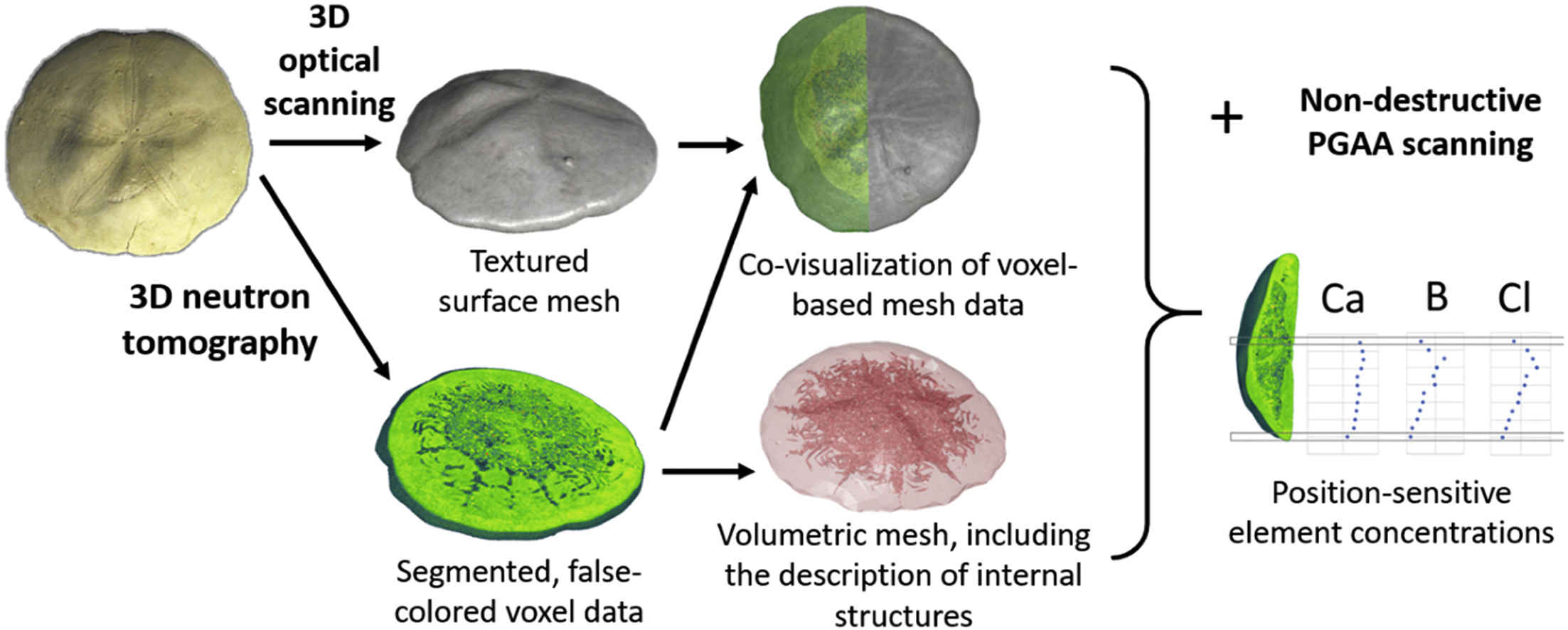Non-Destructive Characterization of Fossil Echinoids
|
12 October 2020 |
Credit: BNC / B. Maróti | |||
|
Body and trace fossils, i.e. remains of the body parts or marks of life-activity of prehistoric animals, are of special interest when gaining knowledge about the paleo-environment of a locality. So far the classification of the specimens has been based on a visual inspection and the analysis of the selected geometrical dimensions. We developed a state-of-the-art combination of three-dimensional surface and volumetric digital imaging techniques, as well as position-resolved element composition analysis by PGAI, and applied it on fossils of the Parascutella gibbercula species to scrutinize their shapes and internal structures. The methodology used in this study opens new perspectives in the understanding of the sedimentation conditions of the sea bottom. |
||||
 |
||||
|
The false-coloured 3D neutron tomography data co-visualized with the photorealistic surface mesh from the 3D optical scanning. Radial profiles of Ca, B and Cl, relative to the calcite, the major constituent of the shell, are shown on the right side. |
||||
|
Maróti, B.; Polonkai, B.; Szilágyi, V.; Kis, Z.; Kasztovszky, Z.; Szentmiklósi, L.; Székely, B. Joint Application of Structured-Light Optical Scanning, Neutron Tomography and Position-Sensitive Prompt Gamma Activation Analysis for the Non-Destructive Structural and Compositional Characterization of Fossil Echinoids. NDT E Int. 2020, 115. |
||||
